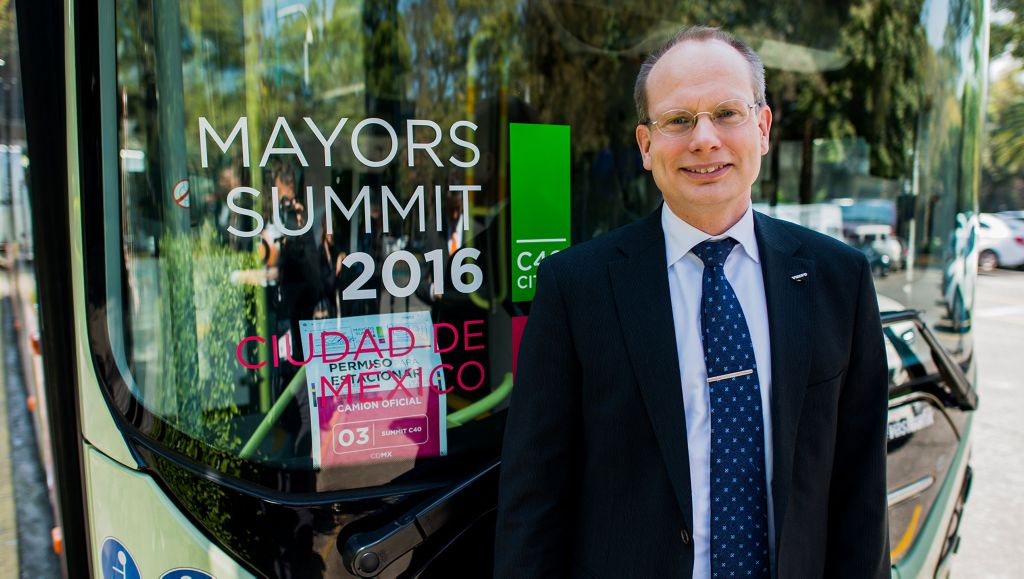Global Summit focuses attention on the world’s transport needs


Outdoor air pollution levels have risen dramatically and in March, World Health Organisation (WHO) warned that levels have risen 8% globally in the past 5 years3. Billions of people are exposed to dangerous air and outdoor air pollution now causes more than 3 million of deaths a year – more than malaria and HIV/Aids4.
Following the UN’s 2015 Climate Change Conference in Paris (COP21), mayors from around the world gather in Mexico City to discuss the growing climate change crisis. They will urge immediate action to address the unacceptable levels of pollution facing major urban areas. Academics, city planners and a host of experts will discuss energy efficiency, low carbon transport and climate resilience amongst other current sustainability issues.
The number of expected bus journeys taken in cities is expected to grow by nearly 50% by 20305 and will hopefully reduce the number of private cars on the roads. However, buses travel up to 10 times further than the average passenger vehicle making their emissions impact greater6 – particularly those that are poorly maintained and in need of renewal.
Volvo has supplied 3,000 hybrid and electric buses globally and the number continues to rise with the highest number of vehicles circulating in UK, Colombia, Sweden, Spain and Germany. The brand also recently unveiled the world’s largest bus at FetransRio which has capacity for up to 300 people. The vehicle is 30 meters in length and was designed to cater for the needs of Bus Rapid Transit systems (BRT) and provide more efficient transportation in addition to reducing fleet sizes and emissions.
Cities are being urged to adopt electromobility transport solutions and include electric and hybrid vehicles. Last year, 26 global cities signed the C40 Clean Bus Declaration to shift part of their fleets to “clean” vehicles. If all 26 cities switched their entire fleet to Low Emission Vehicles (LEV), 2.8 million tons of greenhouse gas (GHG) emissions could be saved each year – the equivalent of taking almost 590,000 cars off the road7.
Håkan Agnevall, President of Volvo Bus Corporation said: “Cities around the world are taking positive steps in addressing the global transport issues by initiating LEV systems. As both environmentally clean and comfortable, we believe electric bus systems are the future of urban public transport.”
Modern electrical buses are also quiet and can be equipped with other services including Wi-Fi. The latest in electric bus innovation also allows for ground-breaking applications for city planners, including indoor libraries or leisure center bus stops.
Notes:
2http://www.c40.org/blog_posts/cities-are-leading-an-electric-bus-revolution
5http://www.c40.org/blog_posts/cities-are-leading-an-electric-bus-revolution
6http://www.c40.org/blog_posts/cities-are-leading-an-electric-bus-revolution
7http://www.c40.org/blog_posts/cities-are-leading-an-electric-bus-revolution
Further details on BRT systems:
An estimated 31.7 million passengers use BRT systems around the world every day. They combine the capacity and speed of a tram or light rail system with the lower cost and flexibility of a bus system by using dedicated lanes and higher capacity buses.
Further details on electrified buses:
Volvo Buses produces three kinds of electrified buses, a hybrid which uses braking to charge a battery that can power the bus, an Electric Hybrid bus that ‘plugs in’ to charge but also has a small diesel range extender engine for very long routes and a pure electric option.
Pollution and human health
Carbon emissions do not directly affect human health, although climate change does, but other emissions from transport do have negative impacts on human health. Of these, Particulate and NOx emissions are particularly significant.
Particulate or particulate matter emissions (PM) are microscopic matter suspended in the air. Some particulate matter can penetrate into the lungs and blood streams due to their small size increasing chances of heart attacks and lung cancer along with other health issues.
Nitrogen Oxides (NOx), like nitrogen dioxide and nitrogen oxide, can have adverse effects on health when people are subject to high level or long term exposure. Nitrogen
Oxides are linked to increased rates of respiratory illness and issues with lung function.